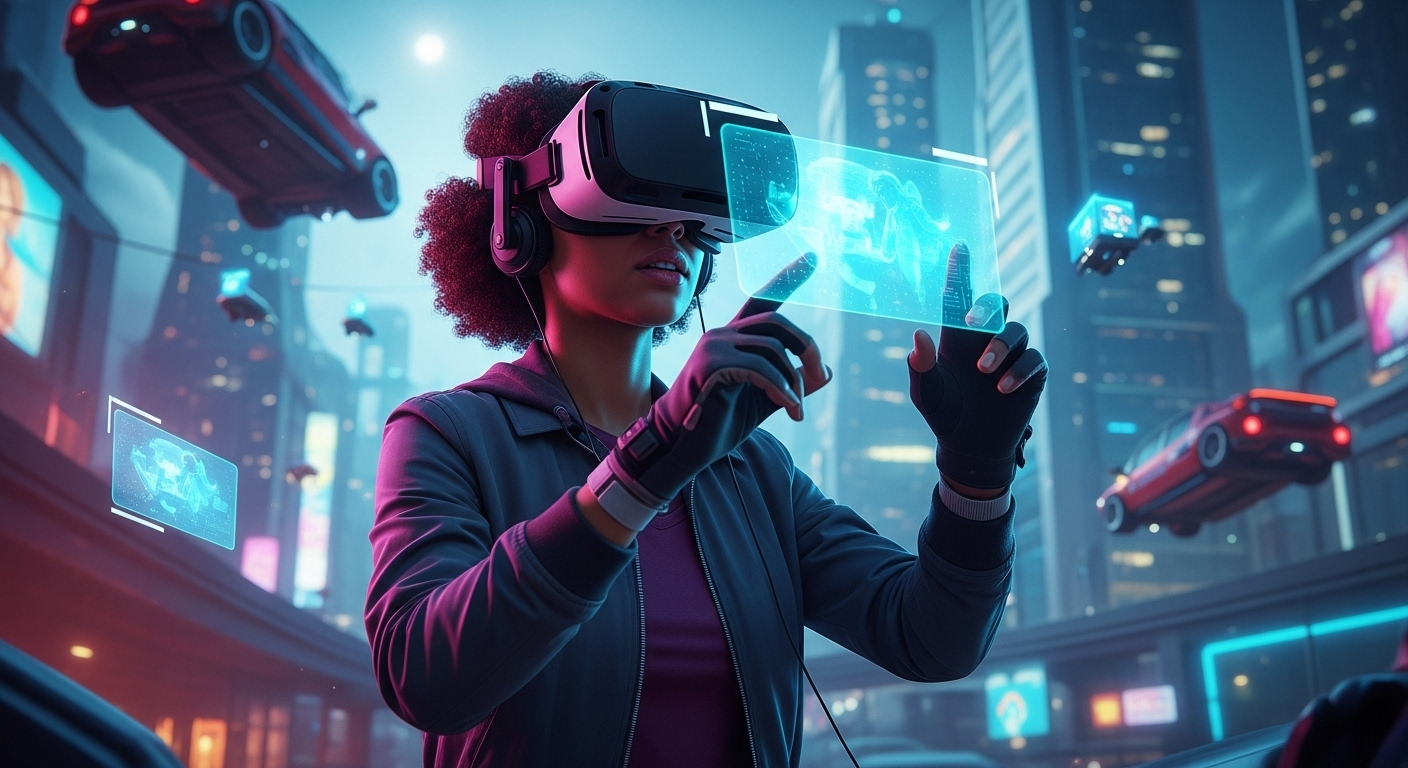Neon Noir: The Resurgence of Cyber-Punk Aesthetics in Film
In the pulsating heart of modern cinema, a familiar yet reinvented aesthetic is making waves. Neon-drenched cityscapes, holographic interfaces, and rain-slicked streets are once again captivating audiences worldwide. This isn't just a nostalgic nod to the past; it's a bold reimagining of cyberpunk for a new era. As filmmakers and audiences alike grapple with the implications of rapidly advancing technology, the cyberpunk genre has found renewed relevance, offering a visually striking and thematically rich canvas for exploring our collective anxieties and aspirations.

The Visual Language of Neon Noir
Neon noir, a term coined to describe the visual style of cyberpunk films, is characterized by its striking use of color and light. Neon-lit streets, holographic advertisements, and the stark contrast between shadow and artificial light create a world that is both alluring and alienating. This aesthetic serves not just as eye candy but as a visual metaphor for the duality of technological progress—beautiful yet potentially destructive.
From Blade Runner to Modern Interpretations
The 1982 film Blade Runner set the visual standard for cyberpunk in cinema. Its influence can be seen in countless films and TV shows since, but recent years have seen a particular resurgence. Movies like Blade Runner 2049, Altered Carbon, and Ghost in the Shell (2017) have revisited and reimagined the cyberpunk aesthetic for contemporary audiences, incorporating advancements in CGI and practical effects to create even more immersive and visually stunning worlds.
Themes for a Digital Age
The renewed interest in cyberpunk aesthetics isn’t just about visual style—it’s a reflection of our current societal concerns. As we grapple with issues of privacy, artificial intelligence, corporate power, and the nature of humanity in an increasingly digital world, cyberpunk narratives offer a lens through which to explore these complex topics. The genre’s ability to blend philosophical questions with action-packed narratives makes it particularly suited to addressing contemporary anxieties.
Beyond Film: Cyberpunk’s Cultural Impact
The resurgence of cyberpunk aesthetics extends beyond cinema. Its influence can be seen in fashion, with designers incorporating neon accents, futuristic materials, and tech-inspired accessories into their collections. In music, genres like synthwave draw heavily from cyberpunk’s visual and auditory palette. Even architecture and interior design have seen a cyberpunk-inspired trend, with neon lighting and industrial elements gaining popularity in urban spaces.
The Future of Neon Noir
As technology continues to advance at a rapid pace, the cyberpunk genre shows no signs of losing relevance. Filmmakers are finding new ways to push the boundaries of the aesthetic, incorporating elements of augmented reality, biotechnology, and climate change into their narratives. The challenge lies in balancing nostalgia for the genre’s roots with innovation that speaks to contemporary audiences.
In conclusion, the resurgence of cyberpunk aesthetics in film represents more than just a visual trend. It’s a cultural phenomenon that reflects our complex relationship with technology and our uncertainties about the future. As we continue to navigate the digital age, the neon-lit streets and rain-soaked cityscapes of cyberpunk cinema offer both a warning and a fascination with the world we’re creating. In the glow of these neon noir visions, we find not just entertainment, but a mirror to our hopes, fears, and the ever-blurring line between humanity and technology.





